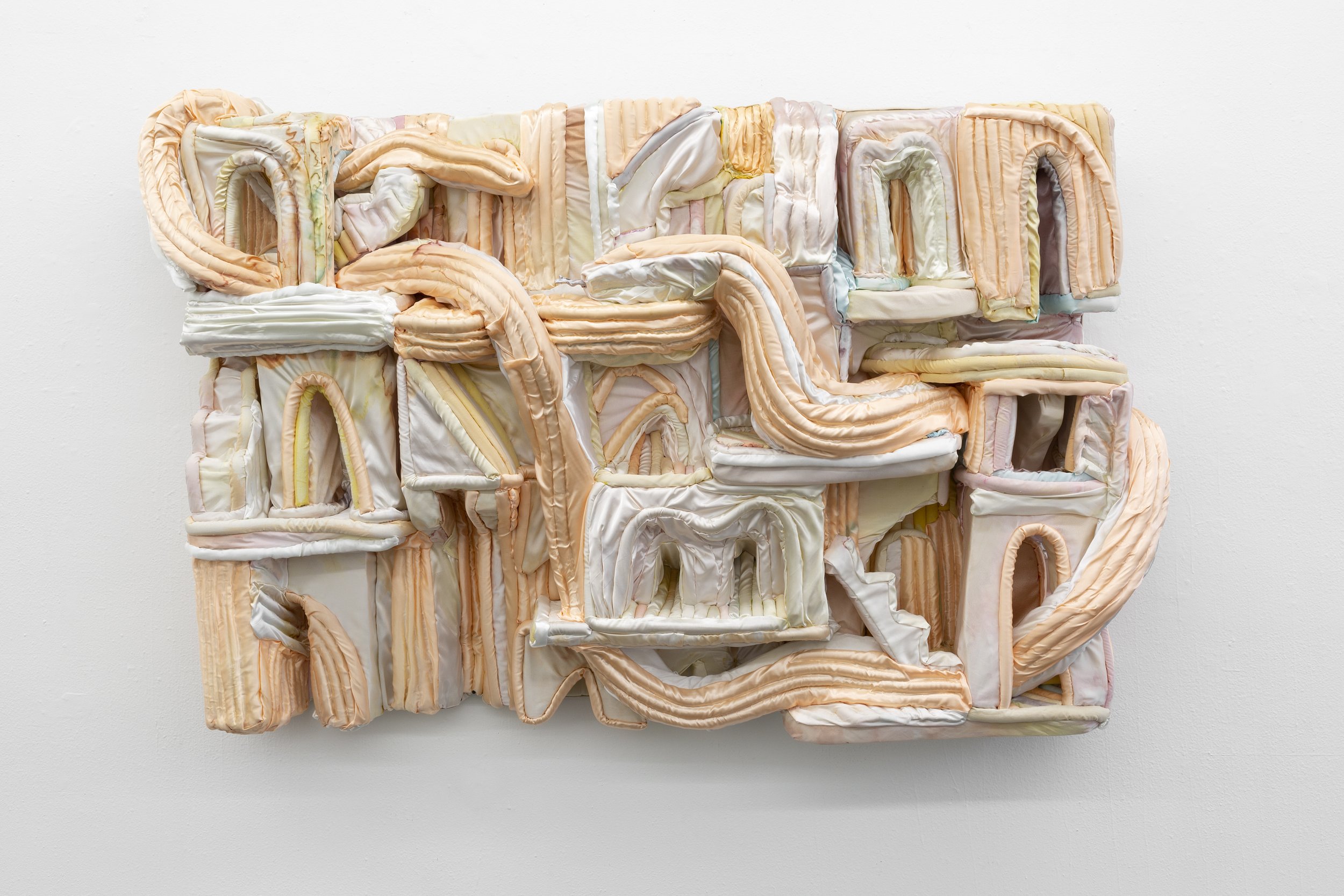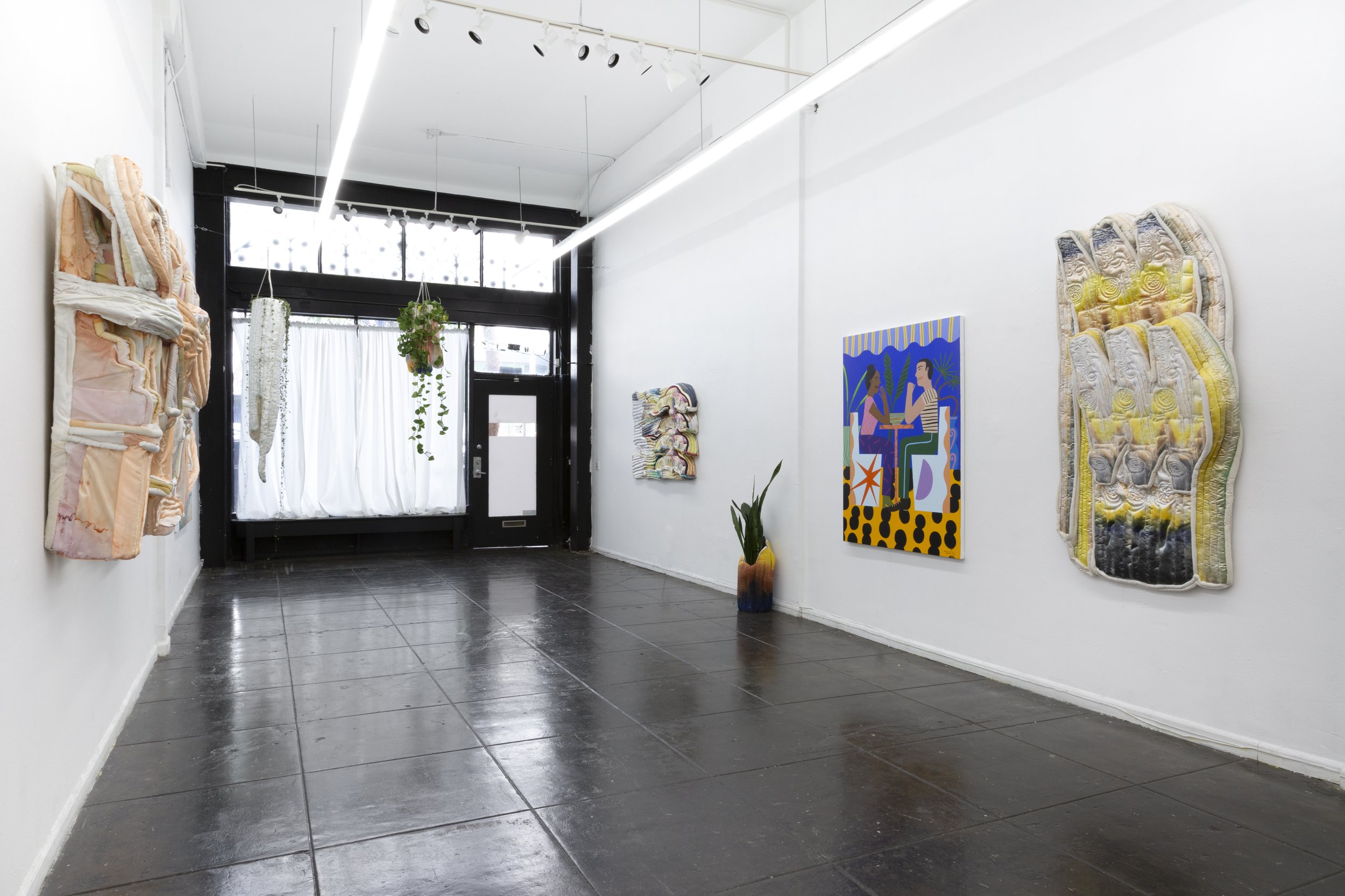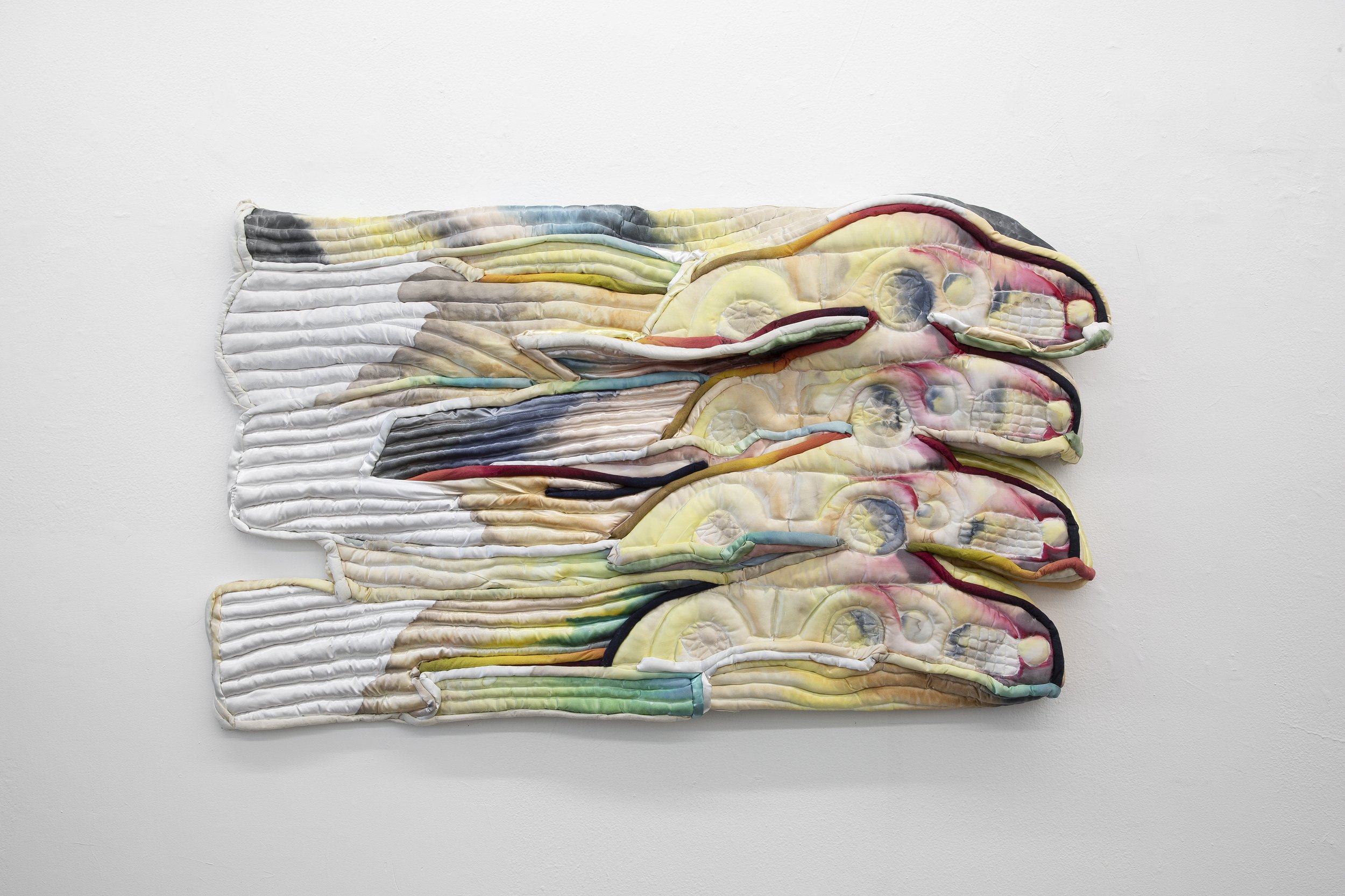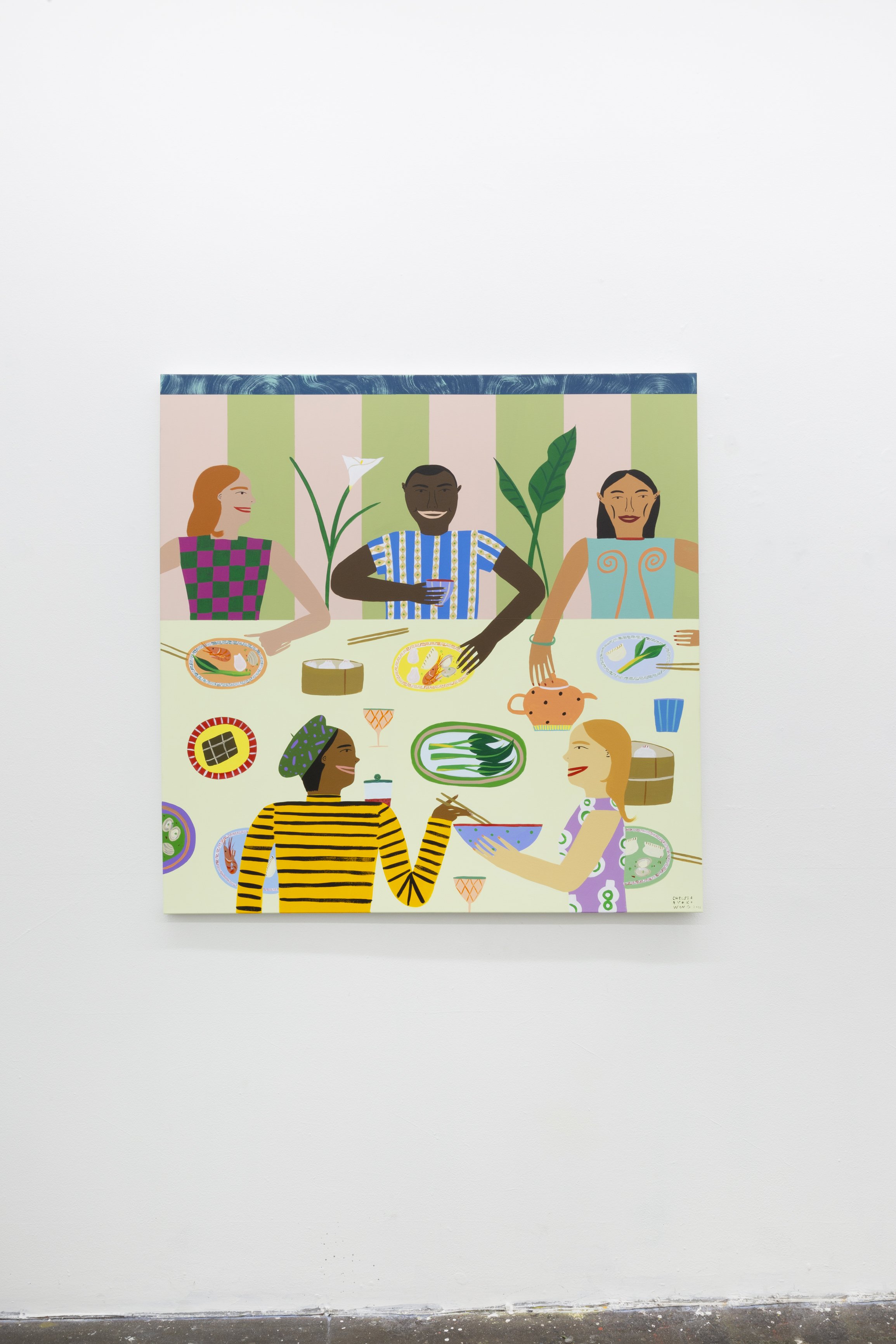Lilah Rose and Chelsea Ryoko Wong
MANTA
January 22nd - February 19th. 2022
CHELSEA RYOKO WONG & LILAH ROSE
TWO-PERSON EXHIBITION
MANTA
TWO-PERSON EXHIBITION (MAIN GALLERY)
EXHIBITION DATES: 22nd JAN 2021 to FEB 19TH 2022
OPENING RECEPTION: SAT, JAN 22nd FROM 6:00 - 9:00 PM
GALLERY HOURS: TUES - SAT / 1 PM - 6 PM
NEW IMAGE ART. 7920 SANTA MONICA BLVD. LOS ANGELES. CA. 90046
New Image Art is pleased to present, “Manta,” a collaborative exhibition between Chelsea Ryoko Wong and Lilah Rose opening January 22nd, 2022 from 1-6 PM. Manta is the Spanish word for blanket which contextually grounds the exhibition in the idea of warmth and kinship.
Sifting through the present and imagining the realms of possibilities is the only means of finding light and new avenues of connections. Both Wong and Rose foster these vital notions through their practice of painting and sculpting. The two artists create a body of work that glimmers into a differing path, where a type of utopia feels like it is at the tip of your fingers. They individually take on the challenge of alchemy by manifesting both of their visions of the future into tangible artworks. Wong paints scenes of a proletariat paradise, creating prospects of community where all bodies exist in harmony. The everlasting sense of serenity embedded in each of Wong’s mission school-style paintings is akin to the peace of mind that Rose’s textural soft sculptures evoke. Lilah’s multilayered relief satin style or matte works provide a window into a lush and fulfilling dreamscape where the objects of reality become mutated into exoskeletons of soft commodities. She renders contemporary familial objects such as cars, hands, and landscapes into plush architectural masterpieces of awe, subverting the rigid into silky. Both artists make a wonder of the everyday world, whether it be an object or the experience of coming together to share a meal, they enhance the domestic world through color and plush materials. This exhibition provides the audience with a reminder of the lasting connections we have to this planet, whether it be the objects that reflect our humanity or the plethora of diverse bodies that coexist in unity.
Chelsea Ryoko Wong (b. Seattle, 1986) is a painter and muralist whose vibrant figure compositions reflect the diversity and style of her home in San Francisco. Through the use of watercolor, gouache, and acrylic techniques, Wong creates busy scenes of co-mingling people drawing from real-life events and her imagination. Her work is known for celebrating racial and cultural diversity, promoting working-class communities, and evoking a sense of curiosity and wonder. With heavily stylized and idyllic imagery, Wong creates an encouraging visual statement promoting positivity, joy, and an openness to one another.
Wong studied at Parsons School of Design in New York and received a BFA from California College of the Arts in 2010. In 2018 she completed a major mural for Serena William’s Yetunde Price Resource Center in Compton, CA, and in 2019 was selected as a Facebook Artist-in-Residence in San Francisco, CA. In addition, she has worked with high school students to create meaningful murals with Mission High School (San Francisco, 2019) and the AIGA Link Art Program (Seattle, 2018). Her work is part of the permanent collections at Fidelity Investments, the San Francisco Arts Commission, Lucille Packard Stanford Hospital, and the UCSF Cancer Research Institute.
Wong’s visual narratives are inspired by both her imagination and her own ontological experiences while depicting the culturally diverse neighborhoods of San Francisco and Los Angeles. Channeling epitomizes the joyous moments found in daily life. For the artist, her practice is a means of actively constructing her own reality grounded in positivity. Her paintings promote and celebrate racial, economic, and cultural diversity. Wong connects the psyche’s ability to search for happiness and generate inner satisfaction. She emphasizes that “While I believe happiness starts from within, having a support system and sense of belonging is essential.” This abundant sense of zeal is evident within the uniformity of smiles worn by the community of friendly figures melded together in Wong’s vibrant scenes. The exuberance of her work invokes a reflective vision into an otherwise chaotic reality. Wong hopes that by sharing her optimism with the world these paintings can inspire the same in others.
Lilah Rose (b. 1990 in Rockford, MI; lives and works in Los Angeles, CA) has been a Los Angeles-based soft sculpture artist since 2017. Her interest in fabric work was initially encouraged by a family legacy of print-making and fashion design through the brands Marushka/Michigan Rag, which were launched by her uncle Richard Sweet with support from her parents. Later, as a boarding student at Cranbrook Kingswood, outside of Detroit, her approach to textiles was enhanced by her participation in the school’s weaving program and the indelible influence of its founder Loja Saarinen upon the campus.
For Rose Manta reflects the multiplicity of a plain piece of cloth. A blanket’s capacity to cocoon and protect one on their journey is akin to the safety provided by cars. Cars are commonly understood to be our rigid exoskeletons, and yet they pamper and cuddle our egos with a sense of ownership and status. When they crash, their metal bodies fold like gleaming satin. And the sheer, overwhelming number of them on the road blur the distinction between an individual and a herd. Their exponential growth imbues them with an organic quality, like an invasive vine, for these reasons cars are also like the other association of the word “Manta,” being of course manta rays. Manta rays are often observed in great flocks of up to fifty seemingly identical creatures, and yet they bear the distinction of being the first fish to pass the “Mirror Test,” meaning they can recognize themselves in a mirror. As the test also stipulates, they have demonstrated that it is specifically their own reflection they respond to; they are not mistaking themselves for another ray. You’d think they’d make that error, given that they all generally look the same. The opportunity for self-reflection however, draws them out of the blanket.


















































